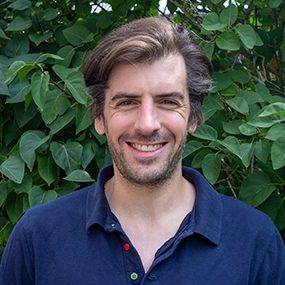
by David Stone, Head of Communications
October 3, 2024Fire in Rio Guaporé Indigenous Territory successfully extinguished, during a year that has seen record fire hotspots across all countries of South America
The Rio Cautário Project received a request for help tackling a wildfire from the members of the neighbouring Rio Guaporé Indigenous Territory (Terra Indígena Rio Guaporé). The project team pinpointed the hotspot using its high-resolution satellite monitoring system and deployed its environmental defence agents to the location. Using direct fire combat and the opening of firebreaks to isolate the spread, the fire was successfully extinguished within 48 hours.
The Rio Guaporé Indigenous Territory is an area that covers 116 thousand hectares in the State of Rondônia, sitting alongside Brazil’s border with Bolivia to the West and to its south, the Resex Rio Cautário, the forest area that the Rio Cautário Project protects. The indigenous territory is home to more than 900 people, from 10 indigenous communities (Aikanã, Arikapú, Aruá, Djeoromitxí, Kanoê, Kujubim, Makurap, Tupari, Wajuru and Wari).
Partnering for greater conservation
For conservation programmes like the Rio Cautario Project, there are the intrinsic goals of protecting the specific area – in this case, the 146,000 ha of the Resex Rio Cautário – but ultimately, the broader ambitious is to spread conservation practices and forest protect across a far larger region.
The decision to help its neighbours in the Rio Guaporé Indigenous Territory was easy because preventing the fire protected more forest area.
This logic also explains the long-term collaborations and partnerships Permian Brasil has been establishing with public authorities, NGOs and businesses to generate greater dissemination of real-time data and knowledge share to improve regional responses to fires and other forest threats. An example of this includes the recent launch by Permian Brazil of its Environmental Protection Observatorio in partnership with Batalhão de Polícia Ambiental (environmental police battalion), CorpoDeBombeiros de Rondônia, Organização dos Seringueiros de Rondônia (Organisation of Rubber Tappers of Rondônia) and Ação Ecológica Guaporé – Ecoporé. The Observatory is a monitoring and alert system that shares near-real-time remote sensing fire alert data via a communications network of participating groups [LINK].
The Rio Guaporé Indigenous Territory was far from an isolated incident. Brazil is currently experiencing some of the highest recorded cases of fires in its history (LINK), which is stretching national and state services and causing significant health, ecosystem, and economic damage.
Wildfire is an increasingly destructive reality in many parts of the world, driven by rising temperatures and widespread environmental degradation. It is a reality that faces all conservation efforts and must forms an integral part of a forest project’s protection strategy (LINK).
Rio Cautário Environmental Defence Agents
The project’s fire management approach combines state-of-the-art satellite and drone observation technologies, a sophisticated alert and communications system, and a team of trained and equipped environmental defence agents, working on the ground.
The environmental defence team, the individuals who responded to the Rio Guaporé Indigenous Territory fire, has a core, full-time staff of 15 agents, all of whom are members of the RESEX Rio Cautário community. The team has in-depth local knowledge of the project area and the broader region, especially the fire risks and best practice for tackling blazes under specific regional conditions.
Throughout the dry season, the team works on 24-hour rotation in readiness for hotspot alerts. During this time where the risks are highest, they are also joined by a brigade of temporary trained agents to bolster the response capacity.
Training happens regularly, year-round and combines drills, scenario rehearsals, use of firefighting equipment, and mapping risk areas and access routes. The project has also invested extensively in preventative measures to map risks and develop mitigation ahead of time. These include additional temporary hires do reinforce the environmental defense team, 25km of firebreaks, an extra temporary field station for the crew, a network of water tanks strategically located where rivers are not easily accessible, cutting edge fire combat and individual protection equipment.
Cacique André, one of the community leaders at TI Guaporé, sent this video as an appreciation of the project crew support to his appeal: ” I’d like to thank all the staff, right? Especially the coordination of these wonderful people. They’re very polite, right? We want to count on this team to avoid fire in our community and, as soon as we can, we want to gather, all together to embrace a cause that can take care of our territory and the reserve as well.” – Cacique André, from Baía das Onças Community, at Rio Guaporé Indigenous Land, which has borders with Rio Cautário State Resex”